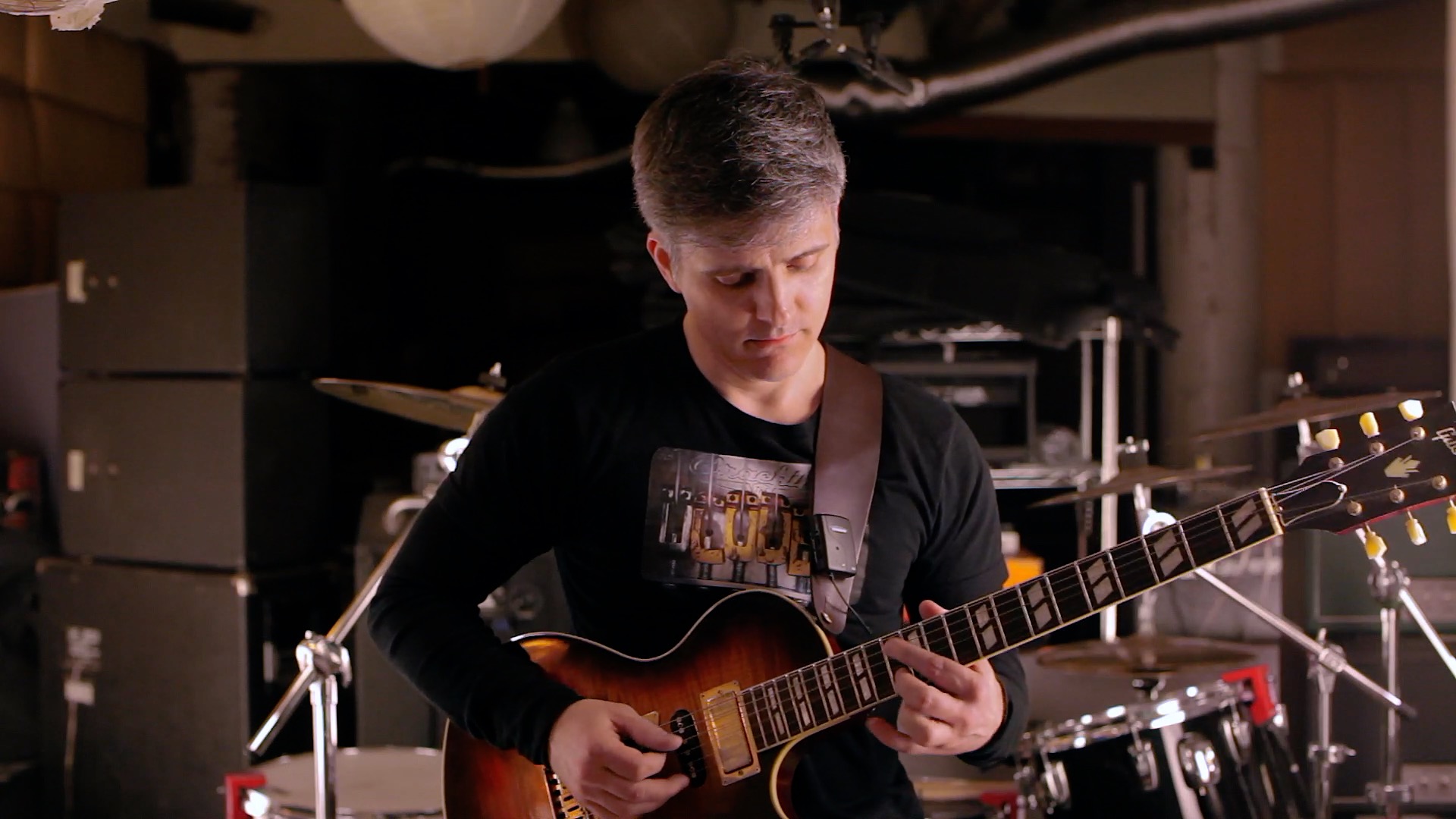Chapter 13 - Melodic Mode

You've Hit Masters in Mechanics Material!
Just like those jackets in the '80s, this video is Members Only. Head on over to our signup page to get suited up.
Already a member? Sign in here.
I had spent so much time thinking about Yngwie’s technique and unraveling his downward pickslanting secrets, that by the time I turned my attention to Eric, the source of the efficiency in his fastest playing was plain as day. The two-note-per-string organization, the switching strings after upstrokes, the sweeping on downstrokes, the triplet chunking across strings — it was all immediately obvious. But at the same time, what was also immediately obvious, is that Eric wasn’t always concerned with being efficient:
When Eric wasn’t painting light-speed pentatonic soundscapes, he was playing elegant slow-speed melodies in an almost contrapuntal fashion. In Eric’s “melodic mode”, bass notes on lower strings alternated with melody notes on higher strings to outline hollow chord voicings. These were frequently tenths, like you’d play on a piano, with a perfect fifth in the bass and a major third on top to flesh out the chord color. These tenth fingerings were most often based on the two most common barre chord shapes, on the sixth string:
…and on the fifth:
And I could see very clearly, without even freeze-framing the Austin City Limits footage, that he was doing all this with repeated pickstrokes using a decidedly inefficient and all-too-familiar jumping motion from string to string: stringhopping.
And this made some kind of sense. Because these hollow voicings were essentially chord shapes with the notes fretted individually, and a skipped string in between. This meant that none of the efficient high- speed techniques would work. Sure, in the Yngwie system, a single note on a string by itself could be played with an upstroke, landing you quickly on the next string of your choosing. But that was it — you could only use that gambit once. As soon as you landed on a string with a downstroke, you’d have to play at least two notes on that string if you wanted to continue using alternate picking to change strings.
But here, Eric was playing strictly one note on a string for the most part. And this meant that there was simply no way out. Considering he wasn’t playing super fast, the choice of simply repeating pickstrokes was probably just conceptually simpler. Why bother with alternate picking at all if the speed wasn’t likely to be a factor in the first place? The mechanical penalty of stringhopping would hobble any slight efficiency gains anyway. Instead, it was probably easier just to repeat the same pickstrokes, and make sure not to hit the wrong strings while you’re doing it.
